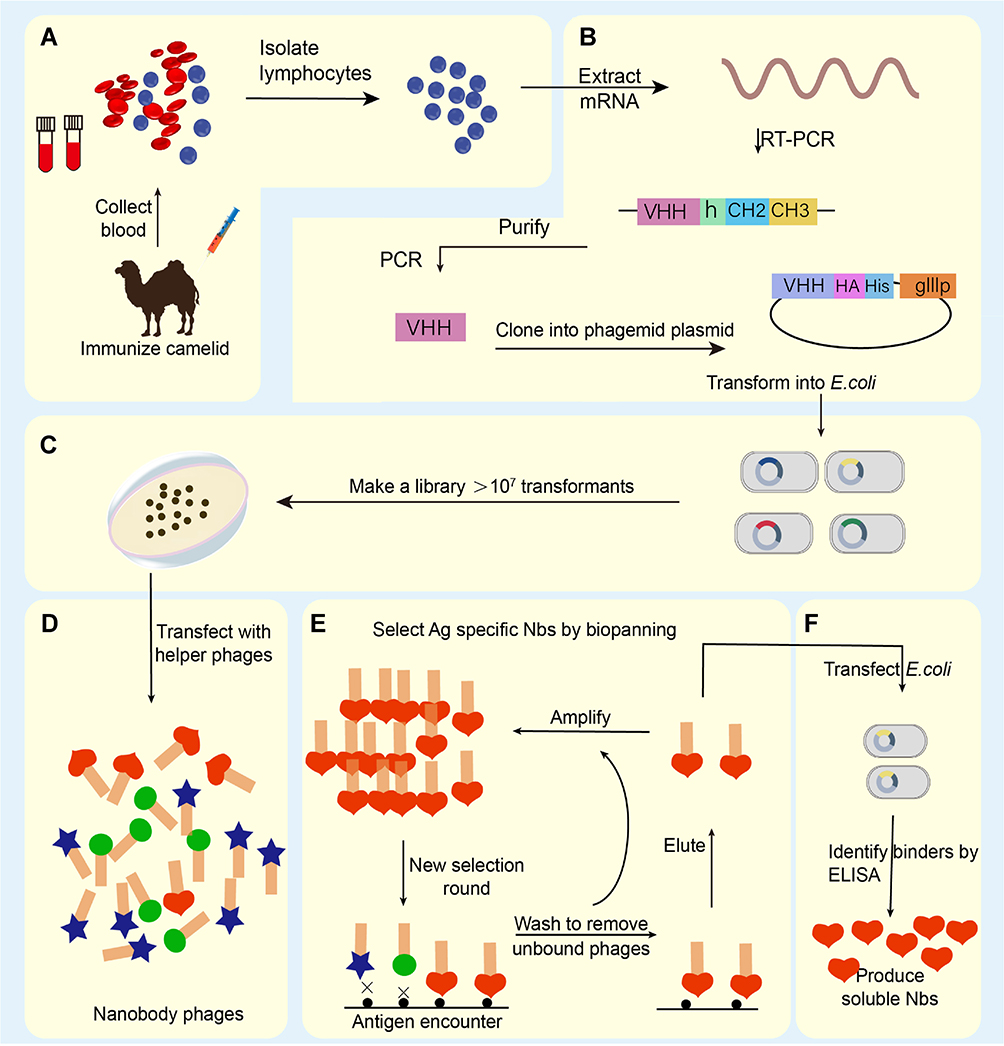The production of nanobody primarily required to select a camelid animal for immunization for about 5–10 weeks. The effector B cells are extracted from the plasma peripheral lymph blood of the immunized camel to isolate the total RNA and cDNA synthesis for sequencing. Phage display technology is used to screen the specific binding ability of the nanobody. Finally, the phage vector was transferred to the Nb expression system to express the Nb proteins. Even though the Nb production technology is relatively complicated, the application of phage display technology and the screening steps of Nb are being gradually optimized.

